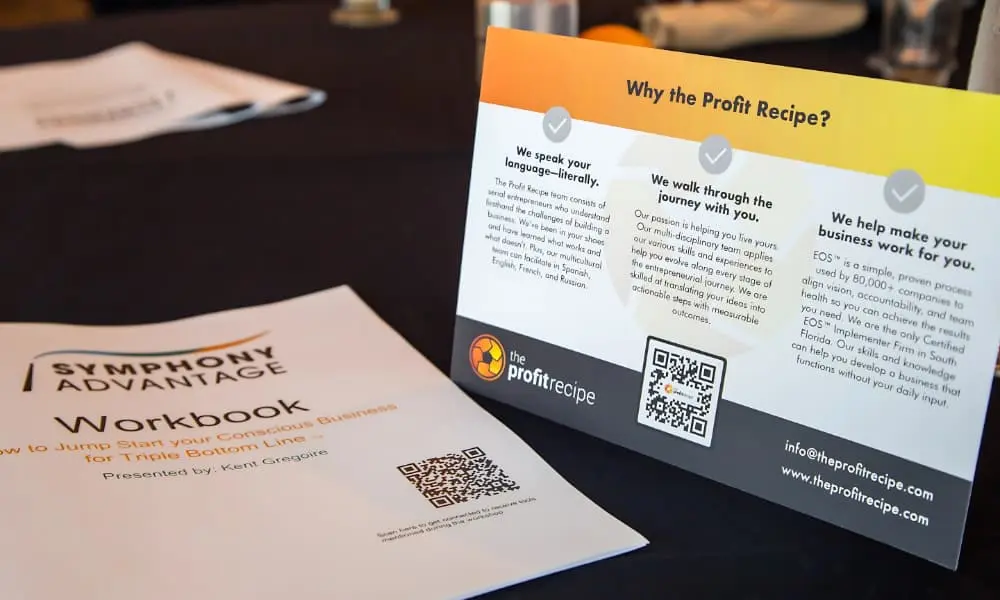The 6 EOS Components of Entrepreneurial Success: Traction (Part 6 of 6)
The Entrepreneurial Operating System (EOS) teaches us that we must focus on strengthening the six key components of business in order to achieve exponential business growth and success. We like to compare these components to spokes in a wheel. If even one of them is weak or missing, the business will wobble and may likely derail.
Traction is the final component. It’s a result of the tactics your leadership team puts in place when participants integrate the concepts of EOS into daily, weekly, quarterly, and annual practice. It’s the rhythm that brings the Vision for your company to life. As ‘Traction’ author Gino Wickman says, “without traction, a vision is a pure hallucination.”
Creating traction
Traction is the momentum a business gains as it grows. It’s what helps a company understand where it stands in an industry—and where it would like to be. Real traction allows your leadership team to master the art of predicting–and executing–short and long-term strategy for the best interest of the business.
Gaining traction is demonstrative proof that a company has a solid business model, and that the leadership team has the ability and understanding needed to facilitate continued growth.
In order to achieve traction, you need to do two things: define your rocks and create a meeting pulse.
Finding the rhythm
Meetings tend to have a negative connotation in the workplace. Employees tend to feel that they waste time, and happen too often – and that may be true. The problem with most meetings is that they often lack a proper structure, are inefficient, and often times filled with the wrong people. The truth is, meetings become an incredibly powerful and invaluable tool when done correctly.
Efficient meetings are essential to keeping your team aligned with the Vision. These strategy meetings are where you will work together to form your 10-year target, 3-year picture, and finally your 1-year plan. Once you’ve found your meeting rhythm, traction takes hold to bring your Vision to life. Traction organizes the year into four 13 week quarters to ensure that you are tracking and working efficiently to achieve the Vision. Your meeting rhythm will help you effectively meet with your team on a weekly, quarterly and annual basis to solve issues and make real progress towards achieving your Vision.
Take a pulse
The Quarterly Pulse meetings are designed to review the progress made in the last 13 weeks, re-engage with your vision, establish the next quarter’s rocks, and tackle the key issues. A lot can happen in 90 days, and it is not uncommon for your leadership team to begin to slide off track, it’s human nature. The Quarterly Pulse helps the leadership team zero-in on the big picture to bring focus and alignment back to the vision. With the big picture in mind, the team can now evaluate and establish a plan to tackle the challenges at hand.
The goal is to continuously make progress towards the ultimate Vision – working as a team to solve issues and meeting the goals set in the 1-year plan, 3-year picture and 10-year target.
On the rocks
When everything is important, nothing is important. Sounds like something Yoda might say, but repeat it to yourself a few times and it’ll start to sink in. Your leadership team can’t execute if it isn’t able to determine priorities.
This is where Rocks come in. Rocks are the quarterly goals for your company that align your team and help you accomplish your annual plan. They are the most important things that need to get done this quarter. Stephen Covey has a great analogy that helps us visualize what our Rocks are. Picture a large empty Jar, and now imagine you have to fill it with rocks, pebbles, sand, and water. The only way you’ll successfully manage to fit it all in is if you focus on the rocks first. They are your biggest priority – by getting those in first, you’ll find that you still have space to add the pebbles, then the sand, and finally the water. It’s about prioritizing.
The goal is to first identify what your company’s rocks are for each quarter or 90-day period. Be SMART when you define your rocks – they need to be Specific, Measurable, Achievable, Realistic and Time-bound. Focus on 3 to 7 company priorities, then ask your leadership team to define 3 to 7 of their own individual rocks.
Focusing on creating and executing your rocks each quarter will help your company stay focused on the vision and maintain traction. Think of it this way, the sun may have more energy than a laser beam, but the laser has focus, it pierces right through the target while the sun cannot. Creating your rocks helps you stay focused on the target, giving you a clear path to reach the desired outcome.
The status of your rocks will be reported as part of your weekly Level 10 meetings and developed at every Quarterly Pulse meeting. This keeps the focus and accountability alive, it serves as a regular reminder and an opportunity to track accountability, address issues and visualize progress.
The Level 10 meeting
Essentially, the weekly Level 10 meetings represent the 13-week sprint to the finish line – crushing the goals set in the Quarterly Pulse meetings. When you adopt the EOS Level 10 Meeting Agenda, you’ll have a successful meeting every week. The built-in structure of the Level 10 meeting is designed to optimize your meeting efficiency, eliminate rabbit trails, and create a dedicated space for solving real issues. There are 7 key components to the Level 10 meeting:
- Segue. Allow each member of your team to highlight a personal or business-related accomplishment that occurred during the last week – this should take no longer than 5 minutes.
- Scorecard. Go through and update your weekly scorecard with any new metrics for each member of your team.
- Rock Review. Each member of your team will run through their goals and state whether they are on track or off track. There should be no discussion here, any issues should get added to the issues list.
- Headlines. Ask each attendee to give a one-sentence update on any customer or employee focused headlines or spotlights.
- To-Do List. Run through any pending action items from the last meeting and ask employees to state if they are ‘done’ or ‘not done.’ Again, there should be no discussion here, add any issues to the issues list. The goal is to have 90% of those To Do’s done.
- IDS. This is the heart of the meeting – where issues get resolved. Start with the highest priority issue and go through the IDS method. Identify. Discuss. Solve. This section of the meeting is the most important, and also the longest. You should allow up to 60 minutes to work through issues as a team. One by one and have good discussions, but overall – come out with a solution and the ‘ToDo’s’ required to put the solution into action.
- Recap. Take 5 minutes to conclude the meeting. Recap the to-do list and determine if there are any cascading messages for other people who are not in the meeting, and have each member of your team rate the meeting on a scale of 1 – 10. The goal is for every meeting to score an average above 8.
The Level 10 meeting is critical to successfully implementing EOS. It serves as a weekly reminder of what you are a working towards and how you will get there. The mastery of these meetings is what will lead you to achieve traction.
Traction is execution. You can plan and plan forever, but if you don’t execute the plan, you fail. Traction is the rhythm and pace we set in order to bring all of the components to life. When each department is successfully defining their rocks, and powerfully executing these weekly and quarterly meetings, you’ve achieved traction at its fullest potential.
Empower your Leadership Team and improve efficiency, increase value, and foster collaboration to get better results. A professional Facilitator can ensure that all of your members are on the same page, so you can kick your business up a notch. Connect with The Profit Recipe to Achieve Traction.



